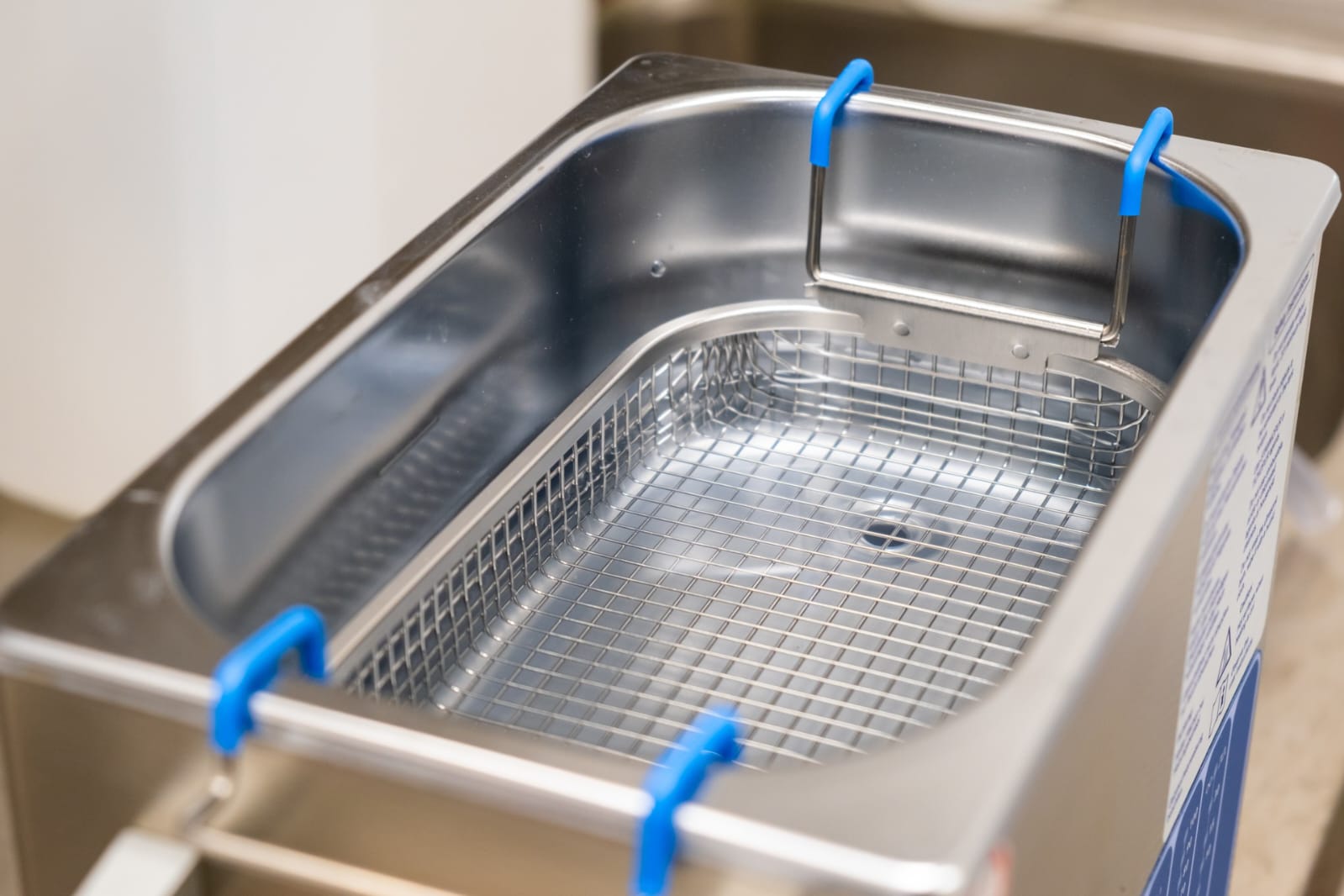Ultrasonic cleaners are powerful devices used in various industries and applications to clean objects efficiently and effectively using high-frequency sound waves. These cleaners utilize a fascinating process known as ultrasonic cavitation to remove contaminants from surfaces and intricate geometries without the need for harsh chemicals or abrasive scrubbing. Here’s an in-depth look at how ultrasonic cleaners work, their components, and the science behind their cleaning process.
Principles of Ultrasonic Cleaning
Ultrasonic cleaning operates on the principle of ultrasonic cavitation, which involves the generation and rapid collapse of millions of microscopic bubbles in a cleaning solution. This process occurs due to the interaction between high-frequency sound waves and the cleaning solution.
Transducer and Generator:
- Transducer: The heart of an ultrasonic cleaner is the transducer, typically made of piezoelectric materials or magneto strictive elements. When an electrical current is applied, the transducer converts this energy into mechanical vibrations.
- Generator: The generator supplies electrical energy to the transducer, which then converts it into ultrasonic waves.
Formation of Cavitation Bubbles:
- Sound Waves: The transducer emits high-frequency sound waves, typically between 20 kHz to 400 kHz (though most common frequencies are 25 kHz, 40 kHz, and 80 kHz), into the cleaning solution.
- Compression and Rarefaction: These sound waves create alternating cycles of compression and rarefaction in the cleaning solution. During the rarefaction phase, low-pressure zones form, causing the liquid to vaporize and form tiny bubbles of vapor or gas.
Cavitation Effect:
- Bubble Growth: As the sound waves continue to pass through the cleaning solution, the bubbles grow due to additional vaporization during each rarefaction cycle.
- Bubble Implosion: Eventually, the bubbles reach a size where they can no longer absorb energy from the sound waves. They collapse or implode violently during the compression phase, releasing a high amount of energy in a micro-scale localized area.
Cleaning Action:
- Mechanical Agitation: The collapse of these cavitation bubbles near the object’s surface creates intense micro-jets of liquid and scrubbing action. This mechanical agitation dislodges and removes contaminants such as dirt, grease, oil, rust, and other particles from the surface of the object being cleaned.
- Penetration: The scrubbing action reaches into crevices, blind holes, and other hard-to-reach areas that are difficult to clean using conventional methods.
Components of an Ultrasonic Cleaner
- Tank: A stainless-steel tank holds the cleaning solution and houses the transducers.
- Transducers: Piezoelectric or magneto strictive transducers convert electrical energy into ultrasonic waves.
- Generator: Provides the electrical power needed to drive the transducers.
- Cleaning Solution: A water-based solution or solvent designed to optimize the cavitation process and enhance cleaning effectiveness.
- Controls: Digital or analogue controls allow users to adjust cleaning time, temperature (in some models), and frequency settings for specific cleaning tasks.
Advantages of Ultrasonic Cleaners
- Efficiency: Ultrasonic cleaners clean faster and more thoroughly than manual methods, reducing cleaning time and labour costs.
- Gentleness: They clean delicate items without causing damage, making them suitable for fragile components and sensitive materials.
- Environmentally Friendly: Uses water-based solutions instead of harsh chemicals, reducing environmental impact.
- Versatility: Effective for cleaning a wide range of materials, including metals, plastics, ceramics, glass, and more.
Applications of Ultrasonic Cleaners
Ultrasonic cleaners find extensive use across various industries and applications:
- Industrial: Cleaning machine parts, tools, and components in manufacturing and maintenance.
- Medical: Sterilizing surgical instruments and medical devices in hospitals and dental clinics.
- Automotive: Removing carbon deposits from engine parts and cleaning automotive components.
- Electronics: Cleaning PCBs, electronic components, and precision instruments.
- Jewellery: Restoring shine and removing tarnish from jewellery and gemstones.
Ultrasonic cleaners operate on the principle of ultrasonic cavitation, utilizing high-frequency sound waves to create microscopic bubbles in a cleaning solution. These bubbles collapse violently near the object’s surface, generating intense scrubbing action that effectively removes contaminants. By understanding the mechanics and benefits of ultrasonic cleaning, businesses and professionals can leverage these devices to achieve superior cleaning results, maintain equipment integrity, and enhance operational efficiency across various industries.



